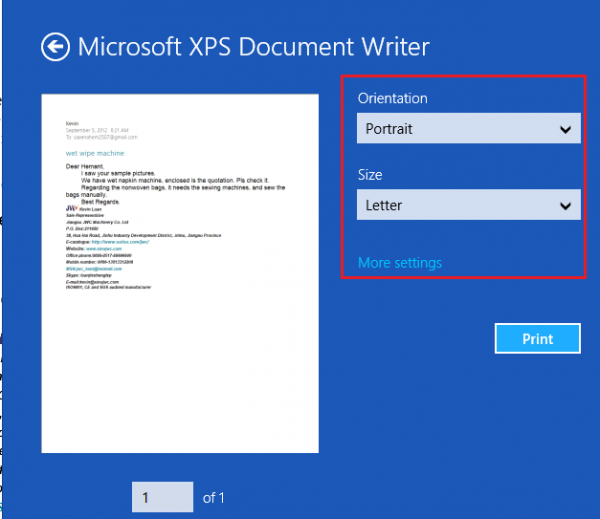Remember when ‘remote work tech’ sounded like something only cutting-edge startups or globetrotting digital nomads truly embraced? It feels like a lifetime ago, doesn’t it? In what felt like an overnight shift, these tools catapulted from ‘nice-to-have’ curiosities to the absolute bedrock of how businesses, big and small, operate. We’ve all been there — fumbling for the unmute button, mastering the art of the virtual background, and discovering that one corner of the house with Wi-Fi strong enough to power our digital command centers.
Today, we’re not just dipping our toes; we’re swimming in a vibrant ecosystem of applications designed for everything: crystal-clear video conferences that bridge continents, instant team chats buzzing with ideas, and sophisticated project management platforms that keep everyone aligned, whether they’re on the couch, at a local coffee shop, or in that surprisingly productive sunny spot by the window. This technological surge isn’t merely about offering flexibility; it’s fundamentally redrawing the blueprint of our entire work landscape.
Speaking of rapid transformations and how we’re all adapting, we tried to bottle some of that lightning in a recent YouTube Short. Give it a whirl — it’s quicker than making a cup of coffee, and you might just nod along (or chuckle at the ‘unmute’ struggle we all know too well):
Table of Contents
From Afterthought to Absolute Necessity: The Great Tech Acceleration
It’s hard to overstate the seismic shift. Pre-2020, remote work was often viewed with skepticism, a peripheral option for a select few. The technology existed, sure, but its adoption was gradual. Then came the global pandemic, acting as an unprecedented catalyst. Suddenly, the ability to work remotely wasn’t a perk; it was a lifeline. Businesses scrambled, employees adapted, and the tech industry responded with an explosion of innovation and refinement in tools designed to make distributed work not just possible, but productive and engaging.
The Pillars of Modern Remote Work Technology
The current remote work tech stack is multifaceted, addressing various needs of a distributed workforce. Let’s break down the core categories:
1. Communication & Collaboration Platforms: The Digital Lifeline
If an office runs on communication, a remote team thrives on hyper-effective digital dialogue. This is where the magic (and sometimes the madness of notifications) happens.
- Video Conferencing Tools (e.g., Zoom, Microsoft Teams, Google Meet): These are the new boardrooms and water coolers. Beyond just face-to-face calls, they offer screen sharing, recording, virtual backgrounds, breakout rooms, and live transcriptions, making virtual meetings more dynamic and accessible.
- Team Chat & Instant Messaging (e.g., Slack, Microsoft Teams Chat): For real-time conversations, quick queries, file sharing, and fostering a sense of community through dedicated channels for projects, topics, or even social interests. Integrations with other apps are key here, turning them into central communication hubs.
- Enhanced Email Management: While chat is immediate, email remains crucial. Modern email clients and add-ons help manage the deluge with features like scheduling, snoozing, AI-powered sorting, and collaborative drafting.
2. Project Management & Productivity Suites: Keeping Everyone on Track
Without the physical oversight of an office, digital tools for organizing tasks, tracking progress, and fostering focused work become paramount.
- Task & Project Management Software (e.g., Asana, Trello, Jira, Monday.com): These platforms allow teams to visualize workflows (Kanban boards, Gantt charts), assign tasks, set deadlines, track progress, and manage resources effectively, ensuring transparency and accountability.
- Cloud Storage & Document Collaboration (e.g., Google Workspace, Microsoft 365, Dropbox): Real-time co-editing of documents, spreadsheets, and presentations is a cornerstone of remote collaboration. Centralized cloud storage ensures everyone has access to the latest versions, from anywhere.
- Time Tracking & Focus Applications: For individuals and teams, these tools can help manage time effectively, understand where effort is going, and minimize distractions, promoting deep work.
![]()
3. Security & Access Management: The Digital Fortress
With work happening outside the traditional secure perimeter of an office, robust security measures are non-negotiable.
- VPNs (Virtual Private Networks) & Secure Access Service Edge (SASE): Essential for creating secure connections to company networks and cloud resources, especially when employees use personal or public Wi-Fi.
- Endpoint Security & Mobile Device Management (MDM): Protecting the laptops, smartphones, and tablets used for work, regardless of their location.
- Identity and Access Management (IAM): Ensuring that only authorized individuals can access sensitive data and applications, often through multi-factor authentication (MFA).
4. Well-being & Culture Platforms: Nurturing the Human Element
The shift to remote also highlighted the need for tools that support employee well-being and maintain company culture, even from afar.
- Virtual Social Platforms & “Water Cooler” Apps: Tools designed to replicate spontaneous social interactions and combat isolation.
- Employee Engagement & Recognition Software: Platforms for surveys, feedback, and peer-to-peer recognition to keep morale high.
The Next Frontier: Emerging Trends in Remote Work Tech
The evolution of remote work technology is far from over. Several exciting trends are shaping its future:
Artificial Intelligence (AI) as Your Remote Co-Pilot
AI is increasingly being integrated into remote work tools to automate mundane tasks, provide intelligent suggestions, and enhance productivity. Think AI-powered meeting summaries, automated task prioritization, personalized learning paths, and even virtual assistants that can manage schedules and communications.
Immersive Collaboration: The Metaverse at Work?
While still in its early stages for mainstream adoption, Virtual Reality (VR) and Augmented Reality (AR) hold promise for creating more engaging and immersive remote collaboration experiences. Imagine virtual meeting rooms where you feel truly present with colleagues, or AR overlays that provide contextual information during remote fieldwork. Disclaimer: The widespread practical application of metaverse technologies for daily work is still developing and subject to technological and adoption hurdles.

The Ascendance of Asynchronous-First Tools
As global teams become more common, the limitations of real-time-only communication are apparent. We’re seeing a rise in tools and practices that better support asynchronous work—allowing team members to collaborate effectively across different time zones without needing to be online simultaneously. This includes sophisticated document collaboration, video messaging (like Loom), and project management tools that clearly track progress and decisions.
Reshaping the Work Landscape: The Broader Impact
The proliferation of remote work technology has profound implications:
- Access to Global Talent Pools: Companies are no longer restricted by geography when hiring.
- Redefined Work-Life Integration: The lines between work and home are blurring, offering flexibility but also demanding new strategies for balance.
- The Evolving Role of the Physical Office: Many offices are transforming into hubs for collaboration, innovation, and culture-building, rather than just places for daily desk work.
- New Challenges: Ensuring cybersecurity, bridging the digital divide, combating potential isolation or burnout, and maintaining a cohesive company culture in a distributed environment are ongoing considerations.

Is Your Remote Work Setup Future-Proof?
Whether you’re an individual professional or a business leader, adapting to the remote work tech landscape is crucial.
For Individuals: Continuously explore and learn new tools. Focus on developing strong digital communication skills, self-discipline, and strategies for maintaining well-being.
For Businesses: Invest strategically in an integrated tech stack that supports your specific needs. Prioritize employee training, robust security protocols, and fostering a remote-first or hybrid-friendly culture. Regularly evaluate your tools and processes to ensure they remain effective.
Conclusion: The Remote Revolution is Here to Stay
The rise of remote work technology has been nothing short of revolutionary. What began as a niche capability has rapidly transformed into a cornerstone of the modern economy. These tools are not just facilitating work from different locations; they are actively reshaping how we collaborate, innovate, and connect. As technology continues to evolve, so too will the nature of work itself. Embracing this change and leveraging the power of remote work tech is no longer optional—it’s essential for thriving in the future of work.
Frequently Asked Questions (FAQs)
- What are the must-have remote work tools for a small team?
- At a minimum, a small team needs reliable video conferencing (like Google Meet or Zoom), a team chat platform (like Slack or Microsoft Teams), cloud storage and document collaboration (like Google Workspace or Microsoft 365), and a basic project management tool (like Trello or Asana).
- How does remote work tech improve productivity?
- It can reduce commute times, allow for more focused work blocks (with fewer office distractions for some), provide better tools for organization and task tracking, and enable asynchronous collaboration, allowing individuals to work during their peak productive hours.
- What are the main security risks associated with remote work tech?
- Key risks include insecure home Wi-Fi networks, use of personal devices for work (BYOD risks), phishing attacks targeting remote workers, and data breaches if cloud services or endpoints are not properly secured. Strong security protocols, employee training, and tools like VPNs and endpoint detection are crucial.
- How is AI expected to further change remote work?
- AI is poised to automate repetitive tasks, provide intelligent meeting summaries and action items, personalize work schedules, enhance virtual assistant capabilities, and even help in identifying potential burnout or disengagement by analyzing anonymized work patterns (with ethical considerations being paramount).
- Is investing in advanced remote work tech expensive?
- Costs can vary widely. Many essential tools offer free or affordable entry-level plans. More advanced or enterprise-grade solutions can be a significant investment but may offer returns in productivity, security, and scalability. It’s about finding the right balance for your needs and budget.

